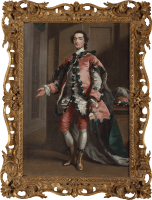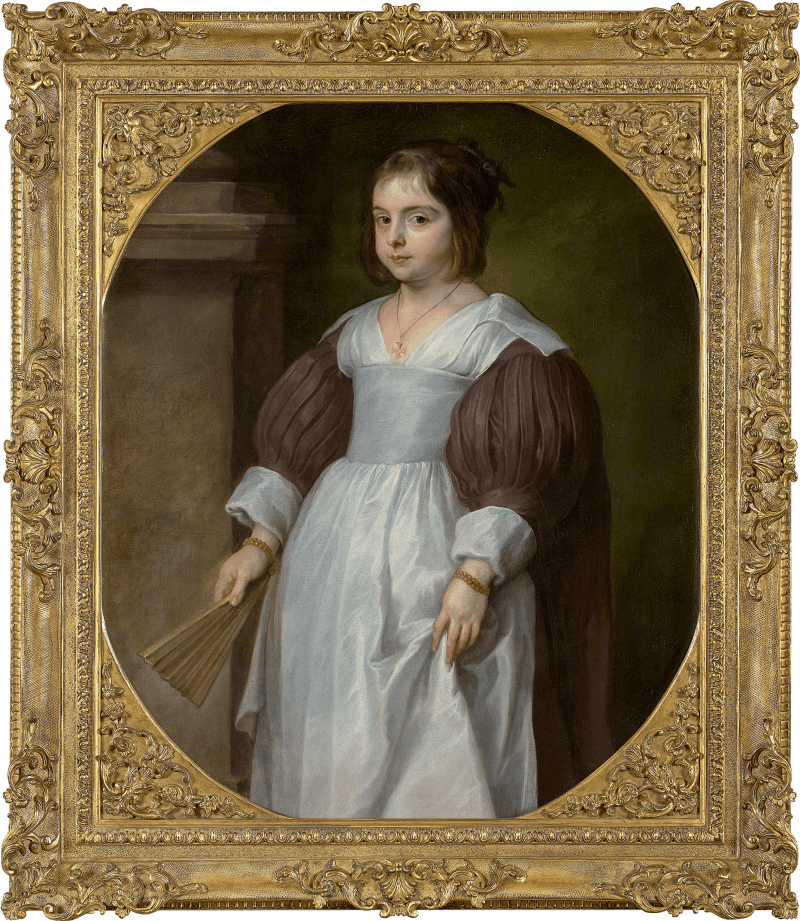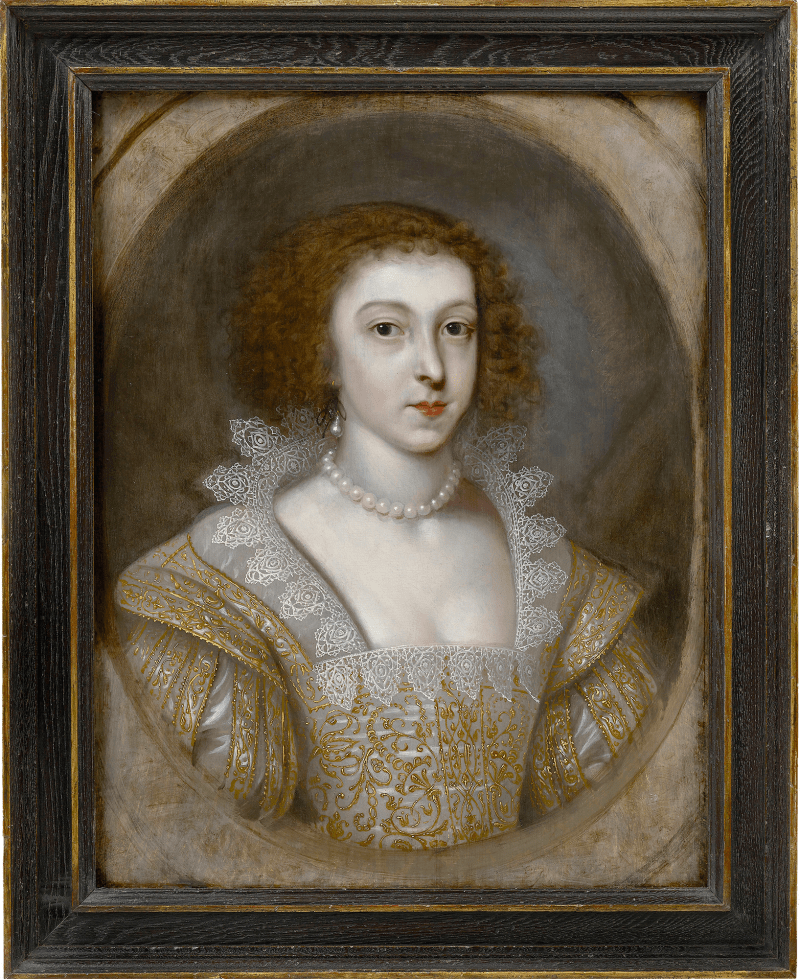This dashing portrait of a gentleman in masquerade costume is a rare, signed work by Joseph Highmore, one of the most successful English painters of the mid-18th century.
Likely painted in the 1740s, this portrait is distinctly rococo in spirit. The sitter is bedecked in a sumptuous pink silk suit with white lining and elaborate green trim; in his left hand, he holds a mask. The elaborate elegance of this portrait encapsulates the taste for masquerades during this period, which had been spurred on by newly popular places of public entertainment such as Vauxhall and Ranelagh Gardens. Eighteenth-century masquerades were enchanting affairs where high society donned bewitching masks and costumes and immersed themselves in a world of mystery and revelry.
Highmore had studied at the Saint Martin's Lane Academy and later at Sir Godfrey Kneller's Academy, and by the 1720s had developed his status as a portraitist. He became a prominent figure in the London art scene, was...
This dashing portrait of a gentleman in masquerade costume is a rare, signed work by Joseph Highmore, one of the most successful English painters of the mid-18th century.
Likely painted in the 1740s, this portrait is distinctly rococo in spirit. The sitter is bedecked in a sumptuous pink silk suit with white lining and elaborate green trim; in his left hand, he holds a mask. The elaborate elegance of this portrait encapsulates the taste for masquerades during this period, which had been spurred on by newly popular places of public entertainment such as Vauxhall and Ranelagh Gardens. Eighteenth-century masquerades were enchanting affairs where high society donned bewitching masks and costumes and immersed themselves in a world of mystery and revelry.
Highmore had studied at the Saint Martin's Lane Academy and later at Sir Godfrey Kneller's Academy, and by the 1720s had developed his status as a portraitist. He became a prominent figure in the London art scene, was a founding member of Chéron and Vanderbank's Saint Martin's Lane Academy in 1720 and contributed to the founding of the Society of Artists in 1760. His art was admired for its engagement with contemporary moral and social issues and was recently the subject of a successful exhibition at the Foundling Museum, Basic Instincts: Love, Passion and Violence in the Art of Joseph Highmore (2018).











